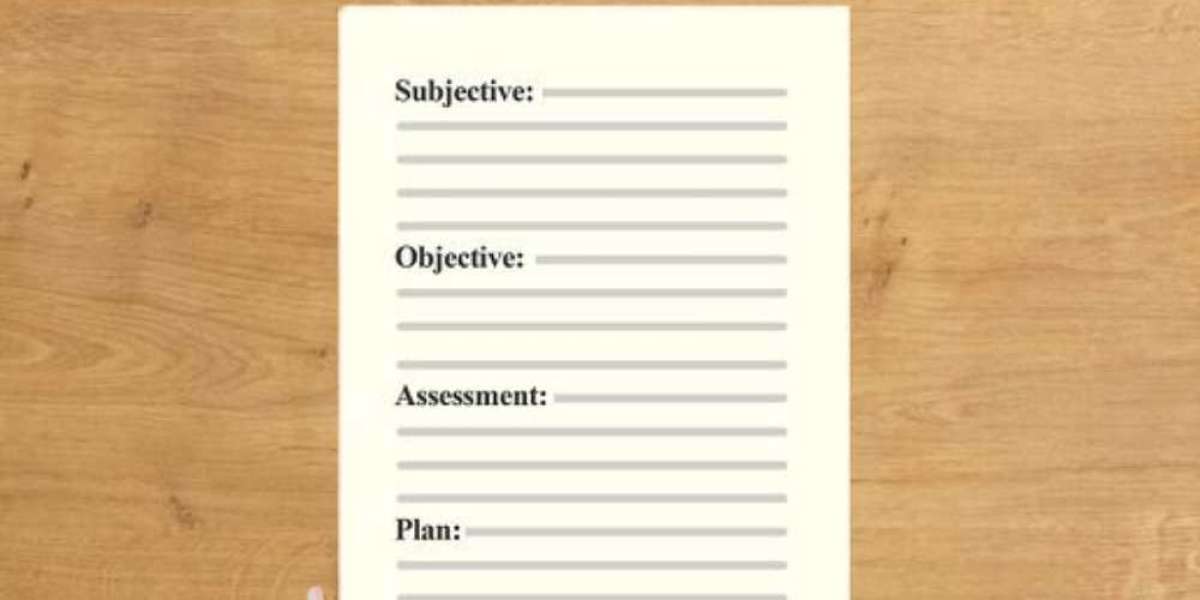Healthcare professionals must accurately assess and manage pain to provide optimal care for their patients. One way to do this is through the use of SOAP progress notes, a structured method for documenting patient assessments and progress. In this article, we will explore how to use SOAP notes for pain assessment.
What are SOAP Notes?
They are a commonly used method of documentation in healthcare settings. The acronym stands for Subjective, Objective, Assessment, and Plan. Each component of the SOAP medical note provides valuable information for healthcare providers to understand a patient's condition, progress, and treatment plan.
Subjective
The subjective component of the note includes information obtained directly from the patient or their caregiver. This can include the patient's description of their pain, how long it has been present, and what factors make it better or worse. It can also include information about the patient's medical history, previous treatments, and any relevant family history.
Objective
The objective component of the SOAP progress note includes information obtained through physical examination and diagnostic tests. Diagnostic tests, such as X-rays or MRI scans, can also be included in this section.
Assessment
The assessment component of the SOAP medical note is the healthcare provider's professional opinion on the patient's condition based on the subjective and objective information gathered. This can include a diagnosis or differential diagnosis, as well as any additional information that may impact the patient's care, such as allergies or contraindications for certain treatments.
Plan
The plan component of the SOAP medical note outlines the healthcare provider's intended course of action based on the assessment. This can include treatments, referrals to other healthcare professionals, or additional diagnostic tests. It should also include a follow-up plan to monitor the patient's progress and make any necessary adjustments to their care.
Using SOAP Notes for Pain Assessment
When it comes to pain assessment, It can provide a valuable framework for healthcare providers to gather information, assess the patient's condition, and develop an appropriate treatment plan. Here are some tips for using notes for pain assessment:
Subjective Component
When gathering subjective information about a patient's pain, healthcare providers should ask open-ended questions to encourage the patient to provide as much detail as possible. This can include questions such as:
- How would you describe your pain?
- When did the pain first start?
- What makes the pain better or worse?
- Have you tried any treatments for the pain in the past?
Objective Component
The objective component of the SOAP progress note for pain assessment can include a variety of assessments, depending on the location and type of pain. Some examples may include:
- Measurements of vital signs, such as blood pressure and heart rate
- Assessments of range of motion, strength, and reflexes
- Diagnostic tests, such as X-rays or MRI scans
- Visual assessments, such as observing swelling or redness in a particular area
Assessment Component
Based on the subjective and objective information gathered, the healthcare provider can make an assessment of the patient's pain. This may include a diagnosis, such as "low back pain," or a differential diagnosis, such as "possible sciatica." It may also include any relevant information about the patient's pain, such as the intensity or frequency.
The Importance of Pain Assessment
Accurately assessing and managing pain is essential for providing optimal care for patients. Pain assessment allows healthcare providers to:
- Understand the nature and severity of the pain
- Develop an appropriate treatment plan
- Monitor the effectiveness of treatments over time
- Make necessary adjustments to the treatment plan.
Effective pain assessment requires a collaborative approach between the patient and the healthcare provider. Patients should encourage to provide as much detail as possible about their pain, and SOAP Notes providers should be attentive and responsive to the patient's needs.
Conclusion
They are a valuable tool for healthcare providers to assess and manage pain. By gathering subjective and objective information, making an assessment, and developing a treatment plan, healthcare providers can provide optimal care for their patients. Effective pain assessment requires a collaborative approach that takes into account the patient's unique needs and preferences.



